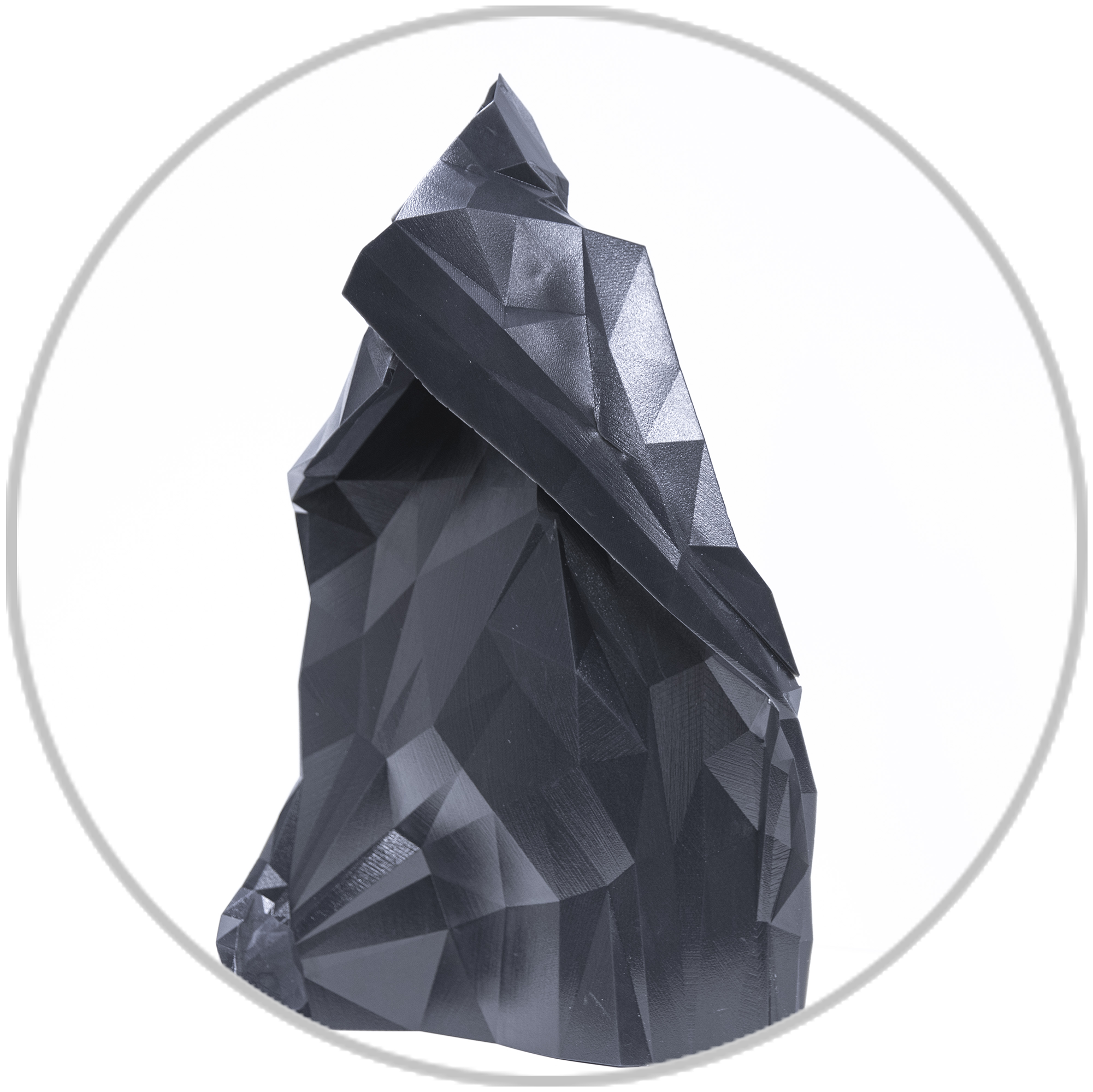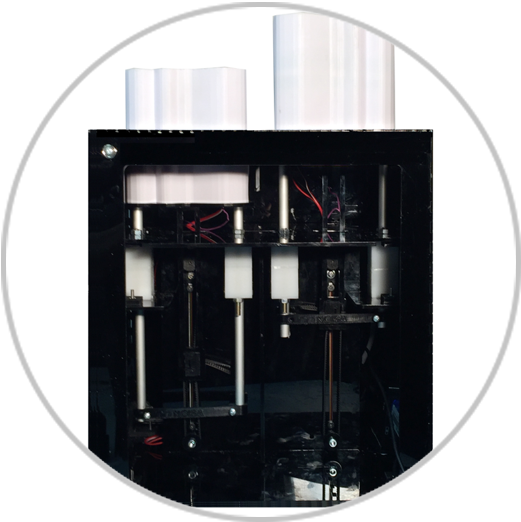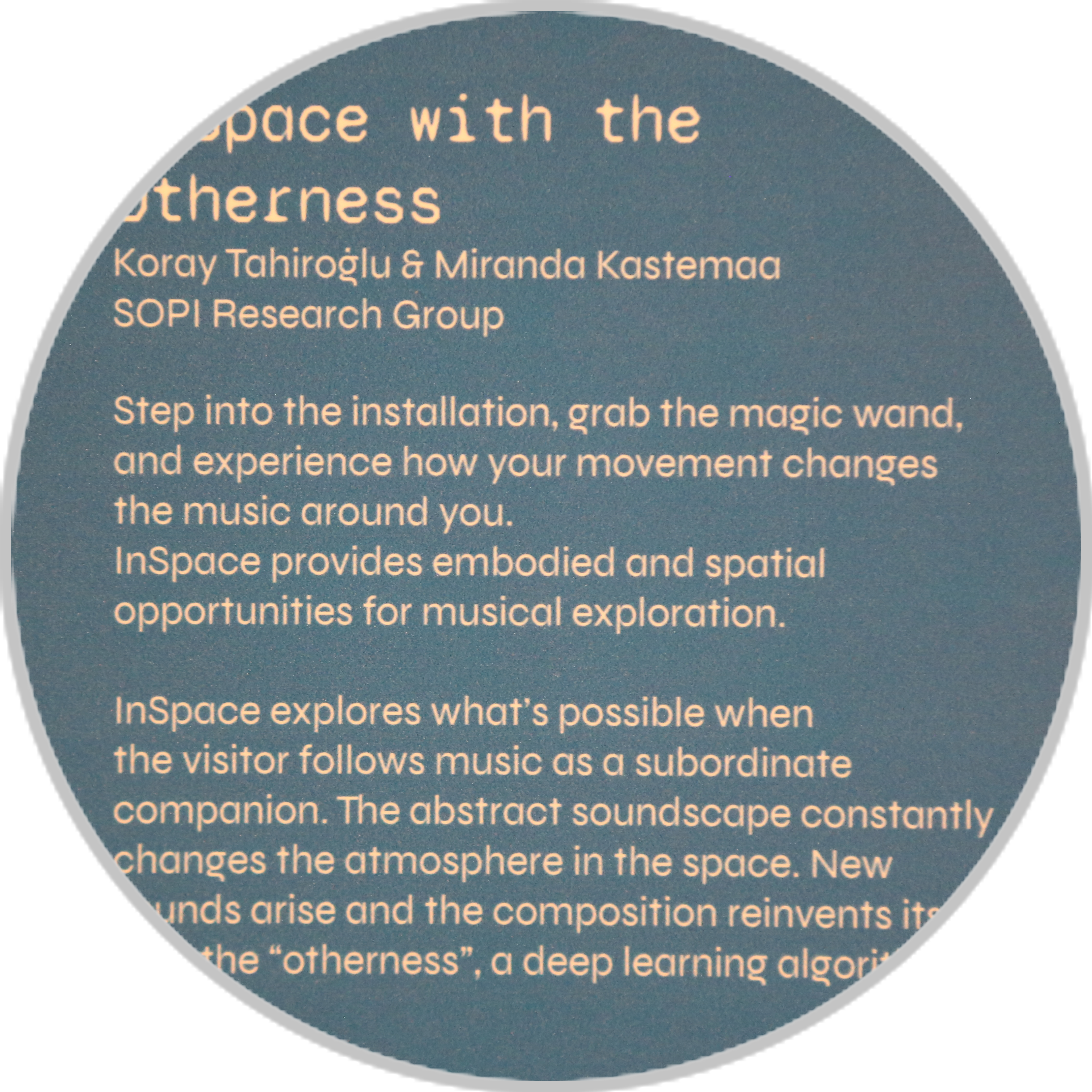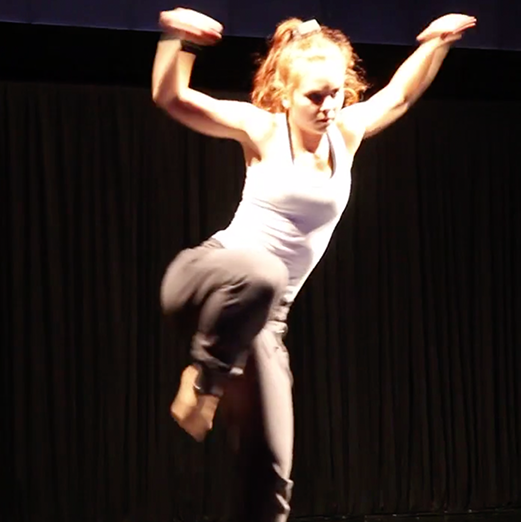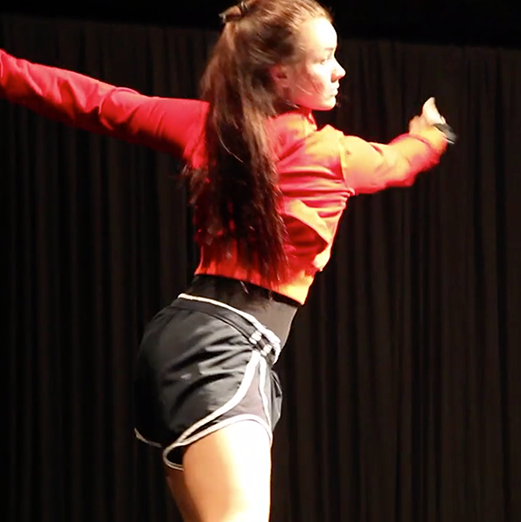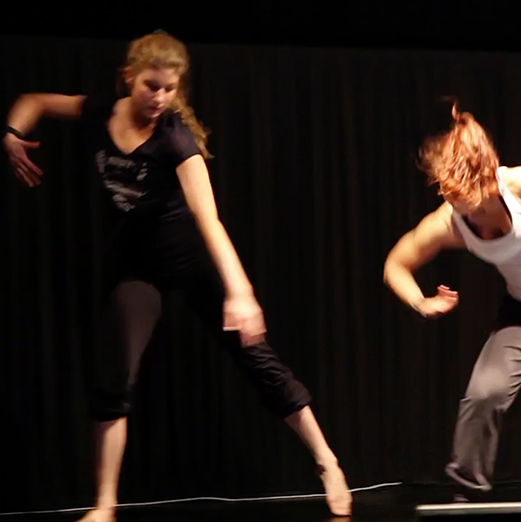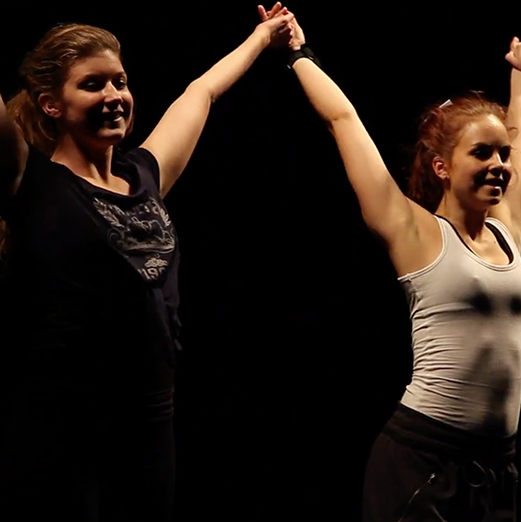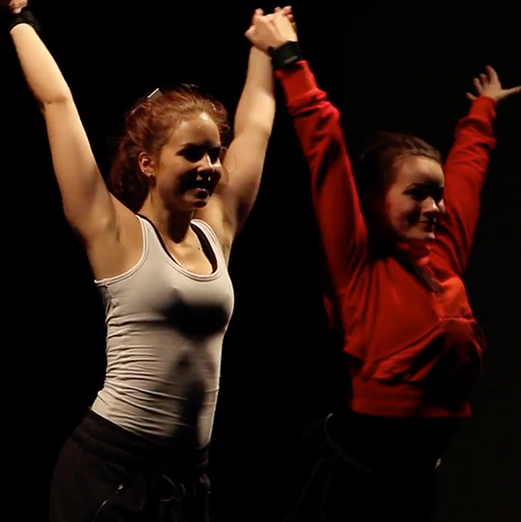Interactive Composition
The choreography of the Raja dance performance for three dancers was sketched by a professional choreog- rapher in an iterative process. Initially, the choreographer was briefed about the possibilities of the technologies to be used. At this stage, the choreographer created the first version of the choreography, which was used as a basis for further development. Choreographer; Jari Saarelainen and dancers; Kiia Elonen, Nora Laitinen, Mia-Mari Sinkkonen and Nina Kivisilta.
The technical configuration of the system includes three laptop computers, networked together via an Ethernet switch. The indoor positioning, motion sensing and sound synthesis systems were each using their own laptop. The audio synthesis was implemented with Pure Data (PD). Sounds can be controlled by either angular or linear velocity, chosen independently between sensors. Three synthesized instruments were created, one for each dancer. The ampli- tude of each instrument is controlled by the vector magni- tude of the velocity data so that the sound level correlates to intensity of movement.
The first instrument, Frequency Synthesis Module, maps musical textures with glassy, oscillating sounds. Eight digi- tal oscillators’ frequencies are controlled by the three velocity values from the 3-axis motion sensor. The 3-to-8 divergent mapping of the control signals is implemented so that each velocity controls each frequency with a certain weight. These weights were experimentally and artistically selected.
The second instrument, Wave Module is a polyphonic sampler with eight sample-voices. The magnitude of the velocity data applies parameter changes to the transforma- tions of sampled sounds, controlling the playback rate of the polyphonic sampler. Resulted output implies dry, mechanical sounds with filtered pitch tonality.
The third instrument, Sin Module, is a frequency modu- lated oscillator. It generates a cosine wave with the ampli- tude controlled by an envelope generator. The magnitude of the velocity data is mapped to frequency and the envelop generator values. The output is streamed to a cosine waveshaper and filtered by a voltage controlled bandpass. The instrument generates brassy, sharp sounds with the dancer’s movements.

